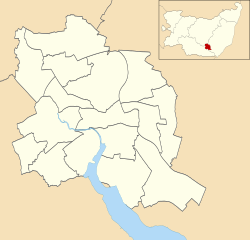| St Peter's Church, Ipswich | |
|---|---|
| St Peter's by the Waterfront, Ipswich | |
 St Peter's Church with Wolsey's Gate | |
| 52°03′12″N1°09′15″E / 52.0532°N 1.1542°E | |
| OS grid reference | TM 166 441 |
| Location | Ipswich, Suffolk |
| Country | England |
| Denomination | Anglican |
| Website | St Peter's by the Waterfront |
| Architecture | |
| Functional status | Redundant |
| Heritage designation | Grade II* |
| Designated | 19 December 1951 |
| Architectural type | Church |
| Style | Perpendicular Gothic |
| Specifications | |
| Materials | Flint with stone dressings |
St Peter's Church (also known as St Peter's by the Waterfront) is one of the twelve medieval churches in the ancient borough of Ipswich, England. [1] An Augustinian priory dedicated to St Peter and Paul occupied a six-acre site to the north and east of the church. As the secular canons regularly used the chancel for religious purposes, leaving the nave for use of parishioners, the church was also known as St Peter and Paul's. [2] The church is located between College Street and Star Lane, with St Peters Street leading north into Ipswich town centre.

